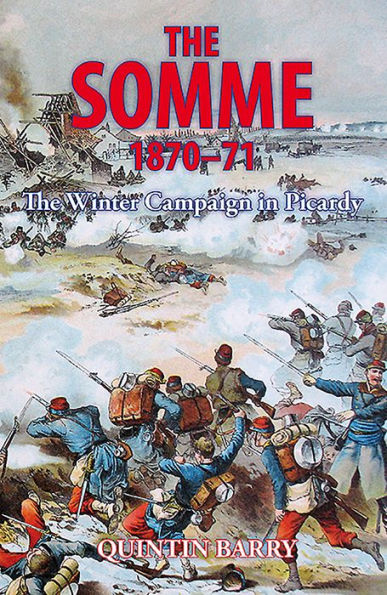

Paperback(Reprint)
-
PICK UP IN STORECheck Availability at Nearby Stores
Available within 2 business hours
Related collections and offers
Overview
The Campaign was fought to a large extent over the area of the Somme battlefields of the First World War, and the names of the towns and villages are grimly familiar with the resonance of what was to come. In 1914-1918 the direction of the fighting was on an east - west axis; in 1870 - 1871 it was north-south, with the line of the Somme being crucial to the outcome of the Campaign. The first major battle was the battle of Amiens on November 24; fought before Faidherbe's arrival, the Army of the North was led by the Chief of Staff, General Farre. It resulted in a German victory and the capture of Amiens.
In December, Faidherbe advanced and took up a strong defensive position along the line of the River Hallue, where a fierce battle was fought on December 23. After the French retreat, Faidherbe regrouped, and advanced again, this time on Bapaume. Another fierce encounter followed on January 3, at the end of which each side believed itself to be defeated. Faidherbe was thwarted in his objective to lift the Siege of Péronne, which fell on January 9. By now the situation at Paris was desperate, and on January 15 Faidherbe began a march eastwards with a view to compelling the movement of part of the investing armies to meet his advance. This resulted in the crucial battle of Saint Quentin on January 19, in which the Germans were now led by the redoubtable General August von Goeben, who won a final and decisive victory.
The Author draws on a wide range of rare contemporary sources to describe the Campaign, which was fought in appalling weather conditions. The book is copiously illustrated, with specially drawn color battle maps to demonstrate the course of the Campaign, and also includes extensive orders of battle.

Product Details
| ISBN-13: | 9781911096160 |
|---|---|
| Publisher: | Helion and Company |
| Publication date: | 06/15/2016 |
| Edition description: | Reprint |
| Pages: | 296 |
| Product dimensions: | 6.10(w) x 9.20(h) x 0.70(d) |
About the Author
Table of Contents
List of Illustrations vii
List of Colour Maps & Photographs xi
Acknowledgements xii
Preface xiii
1 The Army of the North 14
2 The advance of the First Army 25
3 The Battle of Amiens 38
4 La Fère 53
5 Rouen 65
6 The arrival of Faidherbe 75
7 The Battle of the Hallue 85
8 Retreat 104
9 The investment of Péronne 110
10 Bapaume 117
11 Goeben takes command 137
12 The fall of Péronne 143
13 Robert Le Diable 153
14 Faidherbe advances again 159
15 The plan to move east 163
16 The march begins 168
17 Terrry-Poueilly 175
18 The eve of battle 183
19 St Quentin: the southern sector 191
20 St Quentin: the western sector 200
21 St Quentin: victory on the left bank 207
22 St Quentin: the end of the battle 214
23 Aftermath 223
Appendices
I Order of Battle of the First Army, November 15 1870 230
II Distribution of the German forces for the Battle of St Quentin, January 19 1871 235
III Order of Battle of the Army of the North, mid-January 1871 239
IV Moltke's instructions to Manteuffel and Frederick Charles, December 17 1870 243
V The Chassepôt and the Needle Gun 245
VI Major Gamier explains himself to General Faidherbe, January 11 1871 247
VII Report of Colonel Degoutin of the 48th Regiment of the Mobiles du Nord, for January 18 1871 249
VIII Report of Commandant Hecquet, of the 20th Battalion of Chasseurs, for January 19 1871 251
IX Report of Lieutenant Belvalette, commanding the Battery Dupuich, for January 18 1871 253
X General Goeben's orders for the pursuit, January 20 1871 255
XI Order of the Day from the Commanding General after the Battle of St Quentin, January 21, 1871 256
Notes 257
Bibliography 268
Index 270
